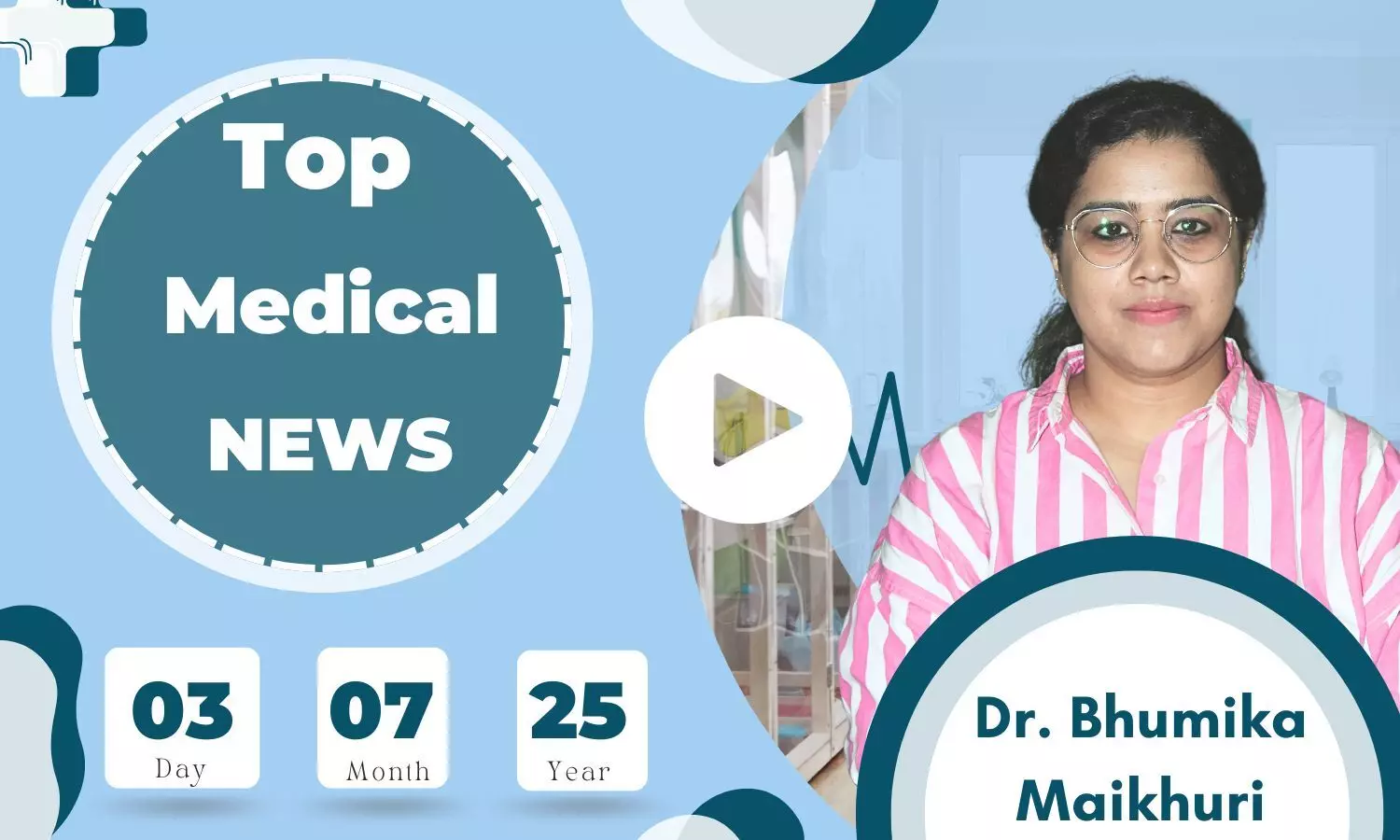By Dr. Bhumika Maikhuri
Here are the top medical news for the day:Loneliness Affects 1 in 6 Globally, WHO Warns of Rising Health and Social CrisisThe World Health Organization (WHO) Commission on Social Connection has released its global report revealing that 1 in 6 people worldwide is affected by loneliness, with significant impacts on health and well-being. Loneliness is linked to an estimated 100 deaths every hour more than 871 000 deaths annually. Strong social connections can lead to better health and longer life, the report says.WHO defines social connection as the ways people relate to and interact with others. Loneliness is described as the painful feeling that arises from a gap between desired and actual social connections, while social isolation refers to the objective lack of sufficient social connections.“In this age when the possibilities to connect are endless, more and more people are finding themselves isolated and lonely,” said Dr Tedros Adhanom Ghebreyesus, WHO Director-General. “Apart from the toll it takes on individuals, families and communities, left unaddressed, loneliness and social isolation will continue to cost society billions in terms of health care, education, and employment. I welcome the Commission’s report, which shines a light on the scale and impact of loneliness and isolation, and outlines key areas in which we can help people to reconnect in ways that matter most.”The report noted that the highest rate of loneliness was reported among adolescents and young adults (20.9 per cent among 13-17-year-olds and 17.4 per cent among 18-29-year-olds). The feeling of being lonely was also more common in low-income countries, where nearly one in four people (24 per cent) report feeling lonely.The highest rates are found in the WHO African Region (24 per cent) — twice the rate in high-income countries (about 11 per cent).While data on social isolation is more limited, it is estimated to affect up to 1 in 3 older adults and 1 in 4 adolescents, the report said.According to the report, poor health, low income and education, living alone, inadequate community infrastructure and public policies, and digital technologies are the major reasons for loneliness.The report underscores the need for vigilance around the effects of excessive screen time or negative online interactions on the mental health and well-being of young people.Reference: https://www.who.int/news/item/30-06-2025-social-connection-linked-to-improved-heath-and-reduced-risk-of-early-deathNew AI Tool Accurately Detects Nine Types of Dementia Using Single Brain ScanPublished in the journal Neurology, Mayo Clinic researchers have introduced an artificial intelligence (AI) tool that can identify brain activity patterns linked to nine types of dementia including Alzheimer’s disease from a single, commonly used scan. The tool, called StateViewer, marks a major step forward in early, accurate diagnosis and faster clinical decision-making.Diagnosing dementia has long been a complex and time-consuming process, often involving a mix of cognitive assessments, imaging, clinical interviews, and referrals to specialists. Even with these, distinguishing dementia remains difficult.To tackle this challenge, Mayo Clinic researchers trained StateViewer on more than 3,600 brain scans from both dementia patients and cognitively healthy individuals. The tool analyzes FDG-PET scans used to observe glucose metabolism in the brain and compares them to a vast database of confirmed dementia cases. By identifying specific brain activity patterns, the tool matches scans with distinct dementia types.StateViewer achieved an 88% accuracy rate in identifying dementia types and helped clinicians interpret scans nearly twice as fast and with up to three times the accuracy of standard workflows.“Every patient who walks into my clinic carries a unique story shaped by the brain’s complexity. That complexity drew me to neurology and continues to drive my commitment to clearer answers.” said Dr. David Jones, Mayo Clinic neurologist and director of the Neurology Artificial Intelligence Program. “StateViewer reflects that commitment a step toward earlier understanding, more precise treatment and, one day, changing the course of these diseases.”Dr. Jones collaborated with data scientist Dr. Leland Barnard, who led the engineering behind StateViewer. “Seeing how this tool could assist physicians with real-time, precise insights and guidance highlights the potential of machine learning for clinical medicine.”By turning complex brain data into clear visual maps, StateViewer offers clinicians regardless of specialty real-time, interpretable insights. This advancement could help bring expert-level diagnostic support to clinics with limited access to neurology services.Reference: Barnard, L., Botha, H., Corriveau-Lecavalier, N., Graff-Radford, J., Dicks, E., Gogineni, V., … & Alzheimer’s Disease Neuroimaging Initiative. (2025). An FDG-PET–Based Machine Learning Framework to Support Neurologic…
